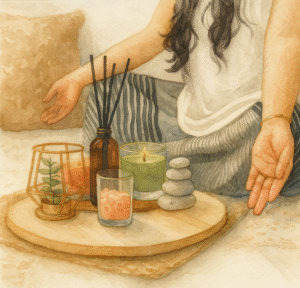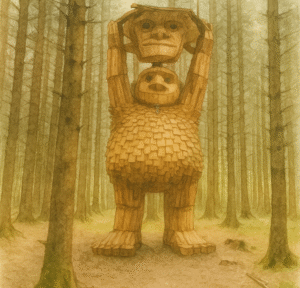Things I’ve Learned While Living In Denmark
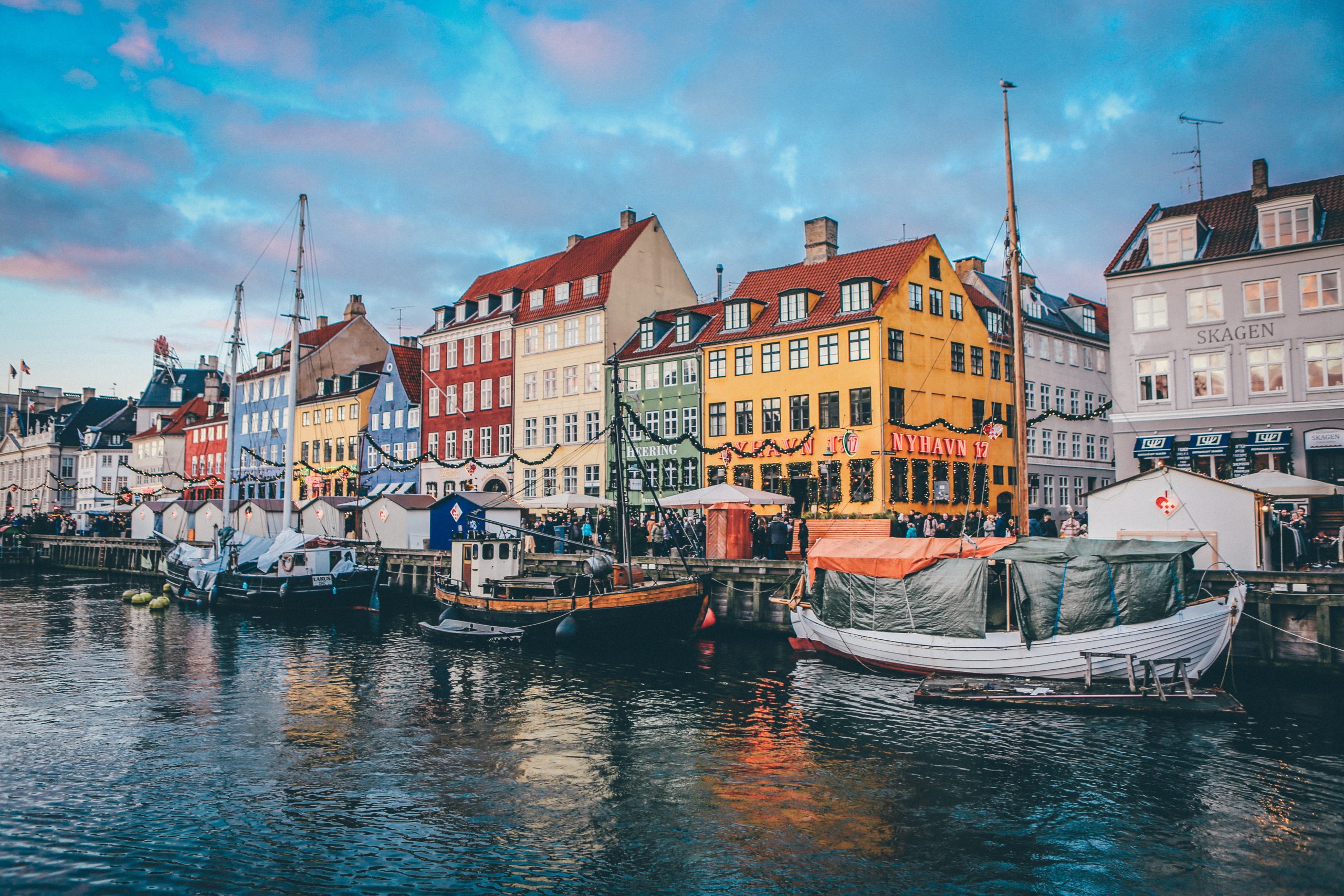
I moved to Denmark in 2017. Here are things I’ve learned since then:
The language is the hardest thing in the world to pronounce and read. It’s incredible how much you’ll try and even when you think you’ve got it Danes won’t understand you. They’re just used to hearing native Danish, not bad Danish…because why would anyone learn Danish? Nobody but Danes speaks it.
Faxe Kondi is the best thing ever, a fact. Imagine Sprite, but tastier, more thirst quenching, and 0 calories. It’s seventh heaven ♥
Jordbærtærte (Strawberry Tart) is almost cake perfection. They’re delicious. Try them.
Danish cuisine is literally anything on top of rye bread. Smørrebrød, means buttered bread. But it rarely is. This classic open-faced sandwich can be topped with anything. Like pickled herrings. Or potatoes. Or fried fish. Or shrimp in mayonnaise. Or raw beef and raw egg.
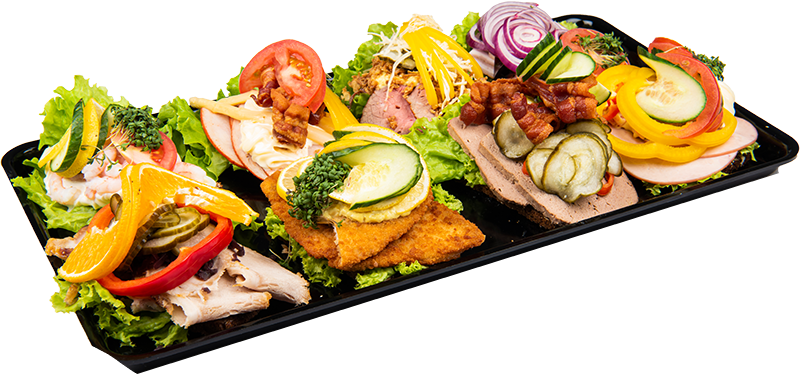
They hate the Swedish, but not really. Like Brazilians hate the Portuguese, but not really. Basically, friendly rivalries.
You pay 45% in tax, but you don’t mind. This cultural focus on the collective means that the taxes in Denmark are quite high when compared to other countries. They have a 25% VAT, and the average Dane pays a 45% income tax. Either way, you cut it, a lot of money goes to the government. Don’t be disheartened! Education and healthcare are free, or at the very least, cheap, so you’ll save a lot of money in the long run, and won’t have to worry about an accident draining your bank account. Also, everything here just works. The hospitals, the metro, the roads, and the streets are clean…your money actually goes somewhere.
People hang out and do things together here. Work-life balance is amazing in Denmark. Nobody is too stressed out from work or ever has too much on, or doesn’t get paid enough not to hang out and do things. People enjoy life here, and most importantly, with their friends and family.
Summer is a state of mind. If the sun is out, people enjoy it. Doesn’t matter how hot it is. The Danes will sit outside with 4 winter jackets on if the sun is out.
Danes take home decor very seriously. And they are exceptionally good at it.
Everyone knows how to ride a bike here. Over 50% of people commute to work/school by bike. As soon as you learn to walk, you are thrust atop a strider bike to get a feel for the balance. I have never seen a bike with training wheels, but the tiniest humans zip by on the littlest cycles.
Everyone speaks English. Unless you are in a small town in Jutland.
Danish lessons are free. But, with a refundable deposit.
To say hello you say hej. Sounds like “hi.” To say goodbye you say hej hej. Or just hej. Don’t get confused.
In Danish, y’s are pronounced like the letter u. Nyhavn is not NIGH-HAVEN. It’s more like “nu-hown.” G’s are pronounced like y’s. And don’t get me started trying to pronounce d’s. There is no correlation. You just have to learn it.
Danes don’t have a word for please. But they have a thousand ways to say thank you. Tak. Thanks. Tusind tak. A thousand thanks. Mange tak. Many thanks. Tak for sidst. Thanks for the last time. Tak for mad. Thanks for the food. And on and on.
Buying used clothing or furniture is acceptable. Why buy new if on marketplace or dba.dk we find it “good as new” and cheaper?
Your Danish CPR card allows you access to all the wonderful government-afforded programs, like free healthcare. Your CPR card is not only your medical card but your library card, your tax number, your only access to a bank account, a cell phone contract, and even an apartment lease. Big Brother can track nearly every aspect of your life with that little number. Don’t lose your yellow card.
Every Friday is for candy. You make an outing to procure Fredagslik. Danes have some of the highest per capita consumption of candy in the world. (This statistic does not include chocolate. Just candy.)
It feels like half of the candy sold here is some form of black licorice. That makes about half of the people here happy. I’m with the half that is not happy.
You can buy sweet licorice, salty licorice, licorice caramel, licorice gummies, licorice mints, licorice gum, licorice ice cream, licorice cookies, licorice pastries, licorice cough drops, licorice tea, licorice-flavored nuts, dates with licorice, licorice jam, licorice liqueurs, and just plain licorice powder to add to all of your recipes to make them taste like – you guessed it – licorice.
To combat all that sugar consumption, there is luckily a lot of organic produce readily available. At the grocery store, the organic options are packed in plastic to keep them from touching their conventional counterparts.
All that plastic and the rest of your garbage is burned here. That heats water which is then pumped into your house and heats your home. Those pipes are sometimes too hot to touch.
Mads Mikkelsen is everyone’s favorite actor. He’s Danish did you know that?
When the sun is out – no matter the season – Danes are outside with faces turned skyward. They will eat outside bundled in wool and scarves and fleece blankets to get that vitamin D.
Halloween did not exist in Denmark until a few years ago. Danes have Fastelavn which they celebrate in February where children dress in costumes and play the ancient ritual – beat the cat out of a barrel. Or they used to. Now they just whack barrels filled with candy. Lucky cats.
If you break part of the barrel first, you are the kattedronning. Cat Queen. If you break the last board down, you are the kattekonge. Cat King. Both win a paper crown to wear for the day. And bragging rights for – LIFE.
Winter bathing is a thing here. Even when water temps reach near freezing. It’s good for circulation and it makes you glad i låget! Happy in the lid.
Danes may seem private, a challenge to befriend, or even downright aloof. But keep trying. They don’t chat at the grocery store. Or on the bus. But once you get to know them, they are truly super interesting, funny, warm, crazy generous, and up for almost anything. At least once.
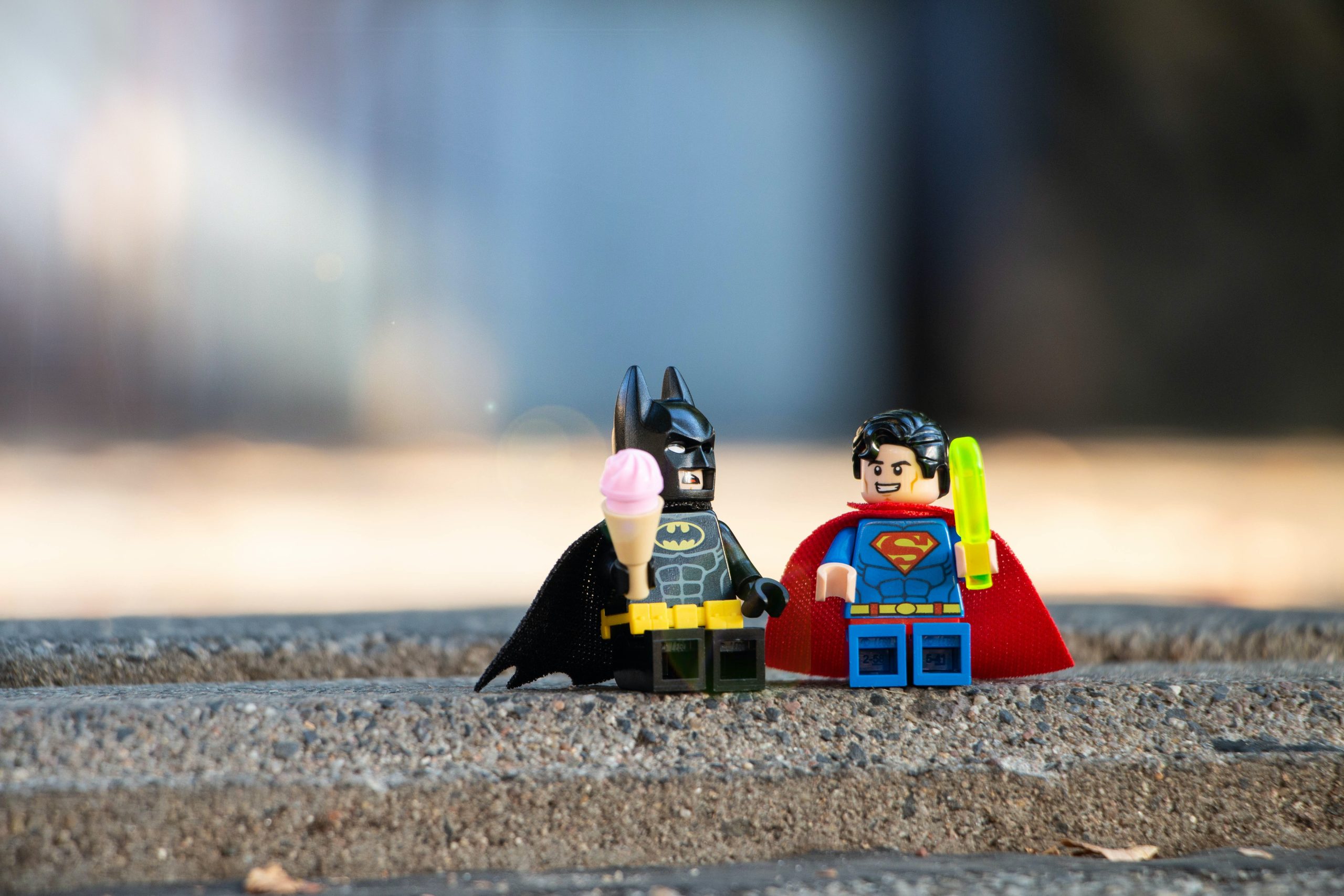
LEGO is Danish. One of the world’s most beloved toys, LEGO, is Danish. Billund, in central Denmark, is home to everyone’s favorite blocks. Building and designing with LEGO blocks is popular in Denmark and Danes are proud of this world-renowned brand. Visiting the LEGO theme park in Billund makes for a fun day out for LEGO enthusiasts of all ages. It’s Denmark’s most popular theme park with rides, shows, LEGO building workshops, and lots of amazing things built out of LEGO.
They have some of the oldest European history. You might know some French kings or old British battles, but it’s not an outrageous claim to suggest that Danish culture isn’t hugely well known. However, when you look into it, you’ll find that Danish history spans back further than a lot of other historied European countries. In fact, Denmark is the oldest kingdom in the world – full stop. The current queen, Queen Margrethe, is part of a royal lineage that can be traced back to 900 AD. Full knowledge of their family lineage over millennia is something few people can claim to have.
They have the oldest flag in the world. It’s not just the royal family that’s an ancient Danish icon. Their flag is the world’s oldest flag, being created in 1219 during the Battle of Lindanisse. A flag this old has a lot of history and tales behind it. The legend says that as the Danes were on their last legs in the battle, the flag miraculously fell from the sky and encouraged them to push forward and win the day. Whether this was a signal from god, a mass hallucination, or some kind of bird, it’s safe to say that this flag won’t be changing any time soon.
There are hundreds of islands. When you think of island paradises, you might picture the Bahamas, Belize, Barbados, or some other place starting with B. Denmark might not spring to mind, despite the fact that it has 444 islands under its jurisdiction. However, only 76 of these islands are inhabited by humans (including Zealand, if you’ve ever wondered where “Old Zealand” was), so if you’re brave, you can try your hand at exploring some islands looking for lost Viking treasure!
Greenland largely belongs to Denmark. Remember when President Donald Trump tried to buy Greenland? What the hell was that all about? Anyway, had the negotiations progressed past the theoretical stage, he would have been dealing with Denmark, or they would at least have had a large say in what happens. The documented geographical size of Denmark can vary wildly, due to the fact Denmark officially owns Greenland. They allow the country to run itself with its own autocratic government, but they still technically own the land. It’s like paying for your child’s rent while they’re at university – they control the daily goings-on, but if something goes wrong, it’s going to be Denmark helping to fix the problem.
They have great environmental sustainability goals. As we seemingly barrel toward unknown environmental precipices, it’s a slight comfort to know that Denmark is pushing hard for all kinds of sustainability goals. They use wind power, open renewable energy power plants, and offer to help other countries with their own goals. You can see the fruit of these efforts when looking at their clear water and fresh air. Thanks, Denmark for doing your best to save us all! ♥
The weather isn’t the best. If you know anything about geography, you’ll know that any country situated near Denmark is not going to have the best weather. They’re very cold in the winter, and when they’re not cold, they’re often rainy. But in the summer, when it’s not raining, it’s nice and temperate. You won’t have weeks upon weeks of heat to rely on, but you’ll have a few days throughout to go swimming or have a barbecue.
They are home to the two oldest amusement parks in the world. They love having the oldest everything in the world, don’t they? Bakken is the world’s oldest amusement park, founded in 1583, followed by Tivoli Gardens, which was founded in 1843. Both are extremely popular with locals and tourists alike. There are all kinds of stuff to do in these parks. They’re always unveiling new things, but there are a lot of old staples they rely on too. One of the main attractions of Bakken is the 82-year-old wooden roller coaster. We’ll hold your stuff while you go on that one.
Denmark has a low crime rate. You don’t have to worry much about your safety. In fact, Denmark is ranked as the second most peaceful country in the world, only behind its Nordic neighbor Iceland. It’s so safe that it’s not uncommon to see parents leave their sleeping babies bundled up in a stroller outside a restaurant while they eat inside! The majority of the crime that Denmark has is non-violent. While a tourist might get pickpocketed, the chances of gun violence or physical violence are very rare.
The cost of living is very high. Denmark, like other Nordic countries, has an extremely high cost of living. Copenhagen is one of the most expensive cities in the world. You will find that the cost of living is lower in other parts of the country. The plus side is that there is very little poverty, but the downside is that the cost of living in Denmark is high. Not many people have a lot of extra money because everything is expensive.
The Danish alphabet has 3 additional letters: Æ, Ø, and Å. Back to #1 on this list, the Danish language is one of the most difficult ones to learn due to a bunch of silent letters and complex pronunciation. Let me introduce you to three letters you won’t come across in the English alphabet, and you will have a hard time with pronunciations: Æ, Ø, and Å.
You’ll never be more than 52km from the ocean in Denmark! If you’re looking for a real challenge while you’re in Denmark, try not to see the ocean at one point. This is one challenge you’ll most likely be unable to complete, as you cannot be more than 52km from the ocean in Denmark.
Copenhagen’s harbor is so clean you can swim in it. The harbor itself has 3 main areas: Nordhavn, Inderhavn, and Sydhavnen. It’s in Sydhavnen that you’ll find the Islands Brygge Harbour Bath, one of the city’s top places for swimming. There are actually 5 pools at Island Brygge, along with a grassy area, where you can take time to relax by the water. What’s more, the local authorities test the water every day, so you can be sure that it’s safe to swim in. Also, the tap water is drinkable (the country has some of the world’s cleanest tap water).
It rains almost every other day – about 170 days a year.
A Dane, H. C. Andersen, wrote The Little Mermaid. But, in the original story, she dies in the end -sorry about the spoiler-. He also wrote the story that inspired Frozen.
There are actually sharks living in Danish waters – 14 species have been documented, but up to 17 species might actually be living here.
A Danish Prince is also a catwalk model. Queen Margrethe’s eldest grandson, Prince Nikolai, is 9th in line to the throne however, he has a rather unusual job for a royal. Currently, the 19-year-old prince is wowing catwalks all over the world as a model! His debut walk was for Burberry at London Fashion Week in 2018, and since then, he’s modeled for Dior designer Kim Jones, who happens to have a Danish mother.
Denmark’s highest peak is only 170 meters. The country’s tallest mountain, Möllehǿj, is a mere 170,87 meters above sea level. This is one of the reasons why there is a deeply ingrained bike culture in Denmark.
Bluetooth is named after King Harald Bluetooth. The Bluetooth technology takes its name from the famous 10th-century Danish King Harald Bluetooth (also known as Harold I), who was responsible for unifying Denmark into a single state. The iconic Bluetooth symbol is actually a combination of the Viking runes for “H” and “B”, Harald Bluetooth’s initials.
Denmark is in the EU but doesn’t use the Euro. Although a member of the European Union since 1973, Denmark negotiated an opt-out of using the Euro as its currency. The Danish Kroner is the official currency.
An unofficial law declares “no one is better than the other”. There’s a unique term in Danish known as “Janteloven”, which plays a key part in Danish culture and mentality. The term means everyone is equal, regardless of class or background. It is believed that the origins of Janteloven stem from control of the population, ensuring that no one thinks they are better than anyone else.
Unmarried adults get cinnamon thrown all over them on their birthdays. Adults who are unmarried by the age of 25 get cinnamon thrown all over them on their birthday.
Danes prefer to visit the dentist abroad. Many Danes travel abroad for dental treatment, usually to Turkey, Poland, or Hungary. This is because having dental work done in Denmark can be VERY expensive. I visit the dentist every time I go to Brazil.
Toilet for both genders. There are many toilets for both genders in Denmark, so don’t get surprised or shocked if a guy or girl comes to the same bathroom as you. I was so surprised the first time I was in this situation. I still remember the feeling when I heard a random guy’s voice outside when I was in the toilet, and I was like, “No way! How did I go to the wrong one? I remember I entered correctly?”
Drinking culture. It’s very typical to see people walking with a beer or many beers on the street in Denmark. You can see people drinking on the street, on public transportation, and in public places. It is legal to buy alcohol everywhere, too.
Moving here was the best thing I’ve ever done. Since moving here, my life has changed so much for the better, and I love every single second of it. I would highly recommend experiencing a different country and culture if you can, and whichever country you choose!
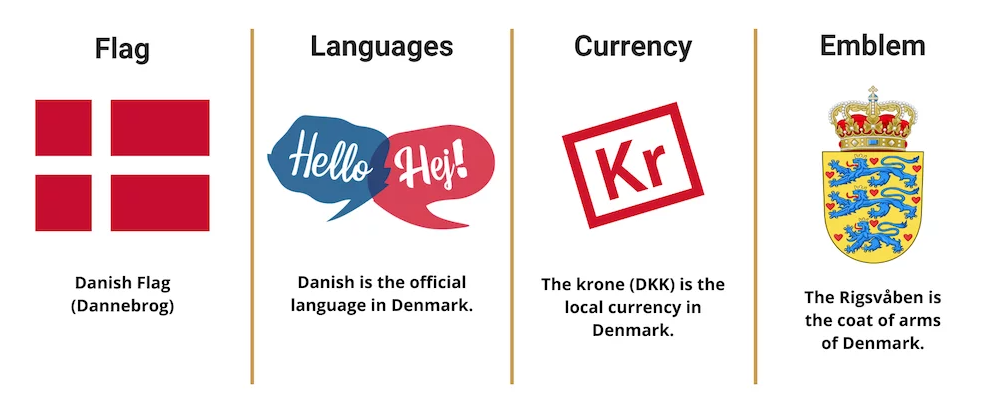
♥ Denmark Wiki Fact File: General Information
More information, statistics, and general information about Denmark, updated as of 2023:
- Motto: “Guds hjælp, folkets kærlighed, Danmarks styrke” (God’s help, the love of the people, Denmark’s strength”
- Flag: Dannebrog
- Government: Devolved unitary parliamentary constitutional monarchy
- Monarch: Margrethe II
- Prime Minister: Mette Frederiksen
- Land area: Denmark: 42,926 km2 (16,574 sq mi), Faroe Islands: 1,396 km2 (538.999 sq mi), Greenland: 2,166,086 km2 (836,330 sq mi)
- Capital city: Copenhagen
- Population: 5,850,189 people.
- Currency: The Danish Krone (DKK)
- Languages: Danish, German, Faroese, Greenlandic
- Religions: Christianity (Church of Denmark), Other Christian, Muslim, No religion
- National Holiday: 5th June (Constitution Day)
- Highest Mountain: Mollehøj, 170m above sea level
- Largest Lake: Arresø, 39.5km2
- National Dish: stegt flæsk
- National Flower: Daisy
- Member of NATO: Yes
- Member of EU: Yes (since 1973)
- Official Website: denmark.dk
- Time zone: UTC+1
- Driving side: right
- Country Number/Prefix: +45
- Country Code: DK, DNK
- Average temperature in Copenhagen (2022): 10.7C (max: 32.4C, min: -4.7C)
♥ 10 Largest Cities in Denmark
Here are the ten largest cities in Denmark. The capital, Copenhagen, tops the list, followed by Aarhus on the Jutland Peninsula, and thirdly is the city of Odense, located on the island of Funen.
Source: World Atlas
| Rank | City | Population |
| 1 | Copenhagen | 1,153,615 |
| 2 | Aarhus | 237,551 |
| 3 | Odense | 145,931 |
| 4 | Aalborg | 122,219 |
| 5 | Frederiksberg | 95,029 |
| 6 | Esbjerg | 72,205 |
| 7 | Randers | 55,780 |
| 8 | Kolding | 55,363 |
| 9 | Vejle | 51,177 |
| 10 | Horsens | 50,074 |
♥ Denmark FAQs
Here are the most commonly asked questions about Denmark:
What are 5 interesting facts about Denmark?
– Denmark is consistently ranked the happiest country in the world
– The Danish flag is the oldest flag in the world
– The iconic LEGO brick was invented by Dane
– The country has won 13 Nobel Prizes
– Denmark has the world’s best pension system (alongside Iceland and the Netherlands)
What are 10 interesting facts about Denmark?
– The Danish Royal family is the oldest monarchy in Europe
– Bluetooth is named after the Danish King Harald Bluetooth
– The Danish flag is the world’s oldest flag
– There are 18 different species of sharks living in Danish waters
– Denmark was the first country in the world to legalize same-sex unions
– More than 50% of Copenhagen’s residents cycle to work every day
– LEGO was invented in Denmark
– There are more pigs than there are people in Denmark
– Sweden is just 30 minutes away from Copenhagen Airport
– Denmark is considered the least corrupt country in the world
What is Denmark famous for?
Denmark is known as the birthplace of LEGO and is the happiest country on the planet. The country is famed for having the oldest monarchy in Europe as well as the world’s oldest national flag. Denmark is also famous for its bike culture, its liberal and open society, and being a world leader in sustainability.
Is Denmark the oldest country?
Denmark is certainly one of the oldest countries in the world – it has the world’s oldest national flag and the oldest kingdom in Europe, with the current monarch, Queen Margrethe II, tracing her lineage all the way back to King Gorm in early 900 AD.
What is Denmark called in Danish?
Danmark is the Danish name for Denmark.
What is unique about Denmark?
Denmark is famous for being the happiest country on the planet, having the oldest monarchy in Europe, and having the world’s oldest national flag. Denmark is also famous for its cycling culture, hygge, its open and liberal society, and being a global leader in sustainability.
How old is Denmark?
Denmark has one of the world’s oldest monarchies with a history stretching all the way back to the year 1000 AD. Danish society is modeled on the foundation of the Danish Constitution of 1849, and its political system has been formed by various political parties since then.







